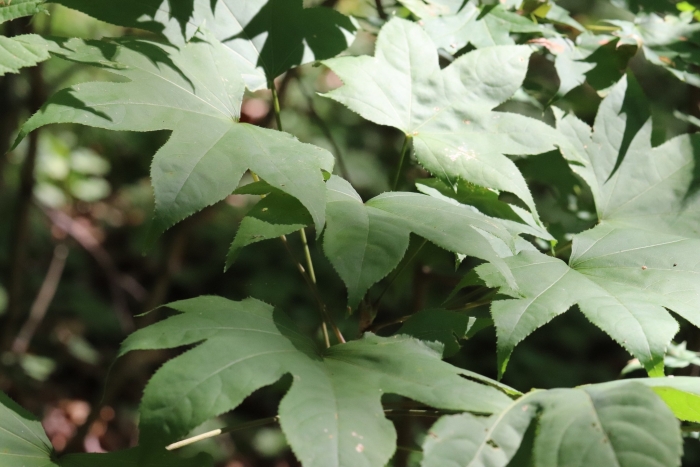Castor Aralia
(Kalopanax septemlobus)
Castor Aralia (Kalopanax septemlobus)
/
/

Nina Filippova
CC BY 4.0
Image By:
Nina Filippova
Recorded By:
Copyright:
CC BY 4.0
Copyright Notice:
Photo by: Nina Filippova | License Type: CC BY 4.0 | License URL: http://creativecommons.org/licenses/by/4.0/ | Rights Holder: Nina Filippova | Publisher: iNaturalist | Date Created: 2021-08-31T10:28:50-07:00 |
























Estimated Native Range
Summary
Kalopanax septemlobus, commonly known as castor aralia, is a deciduous tree native to cool temperate forests, often found on mountain slopes and in valleys in northeastern Asia, including regions of Japan, Korea, and eastern China. It can grow up to 98 feet tall with a trunk diameter of 3-5 feet. The tree has a broad, irregular crown and deeply palmately lobed leaves that can be up to 12 inches wide. Its small, creamy white flowers bloom in large, showy umbels during late summer, followed by small black drupes that are attractive to birds.
Castor aralia is appreciated for its unique foliage and architectural form, making it a striking specimen tree in large gardens and parks. It is also used in reforestation projects in its native range. The tree is adaptable to a variety of soil conditions but prefers well-drained soils and can tolerate both full sun and partial shade. While it is relatively low-maintenance, it may require pruning to maintain a desirable shape. Gardeners should be aware that the tree has spiny stems, which can be a deterrent for planting in areas with high pedestrian traffic. It is also potentially invasive outside its native range, so it is crucial to consult local regulations before planting.CC BY-SA 4.0
Castor aralia is appreciated for its unique foliage and architectural form, making it a striking specimen tree in large gardens and parks. It is also used in reforestation projects in its native range. The tree is adaptable to a variety of soil conditions but prefers well-drained soils and can tolerate both full sun and partial shade. While it is relatively low-maintenance, it may require pruning to maintain a desirable shape. Gardeners should be aware that the tree has spiny stems, which can be a deterrent for planting in areas with high pedestrian traffic. It is also potentially invasive outside its native range, so it is crucial to consult local regulations before planting.CC BY-SA 4.0
Plant Description
- Plant Type: Tree
- Height: 30-60 feet
- Width: 30-60 feet
- Growth Rate: Moderate
- Flower Color: White
- Flowering Season: Spring, Summer
- Leaf Retention: Deciduous
Growth Requirements
- Sun: Full Sun
- Water: Medium
- Drainage: Medium
Common Uses
Border Plant
Natural Habitat
Cool temperate forests on mountain slopes and in valleys in northeastern Asia
Other Names
Common Names: Prickly Castor Oil Tree, Tree Aralia, Ci Qui, Harigiri, Sen-No-Ki, Castor-Aralia Tree
Scientific Names: , Kalopanax septemlobus,
GBIF Accepted Name: